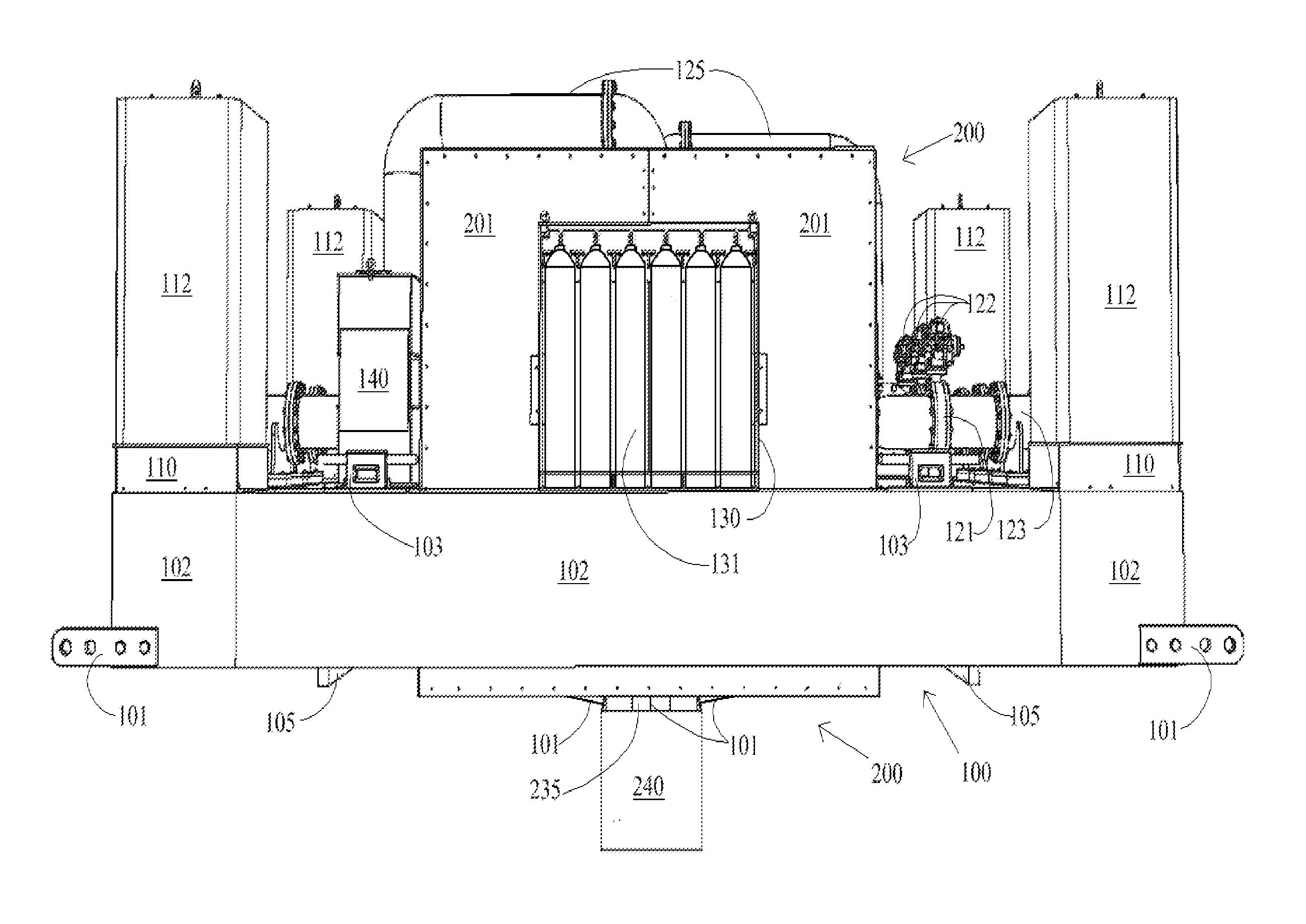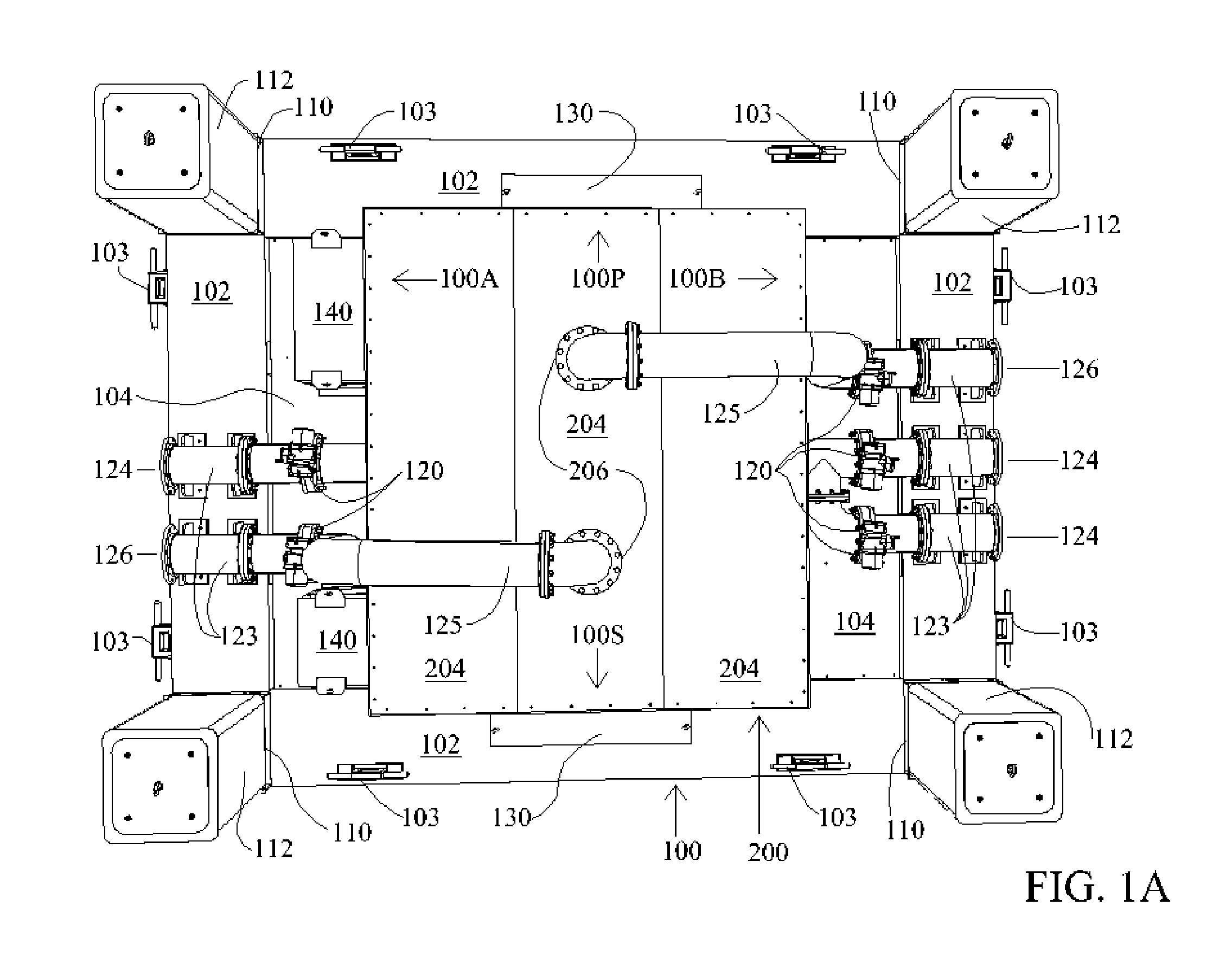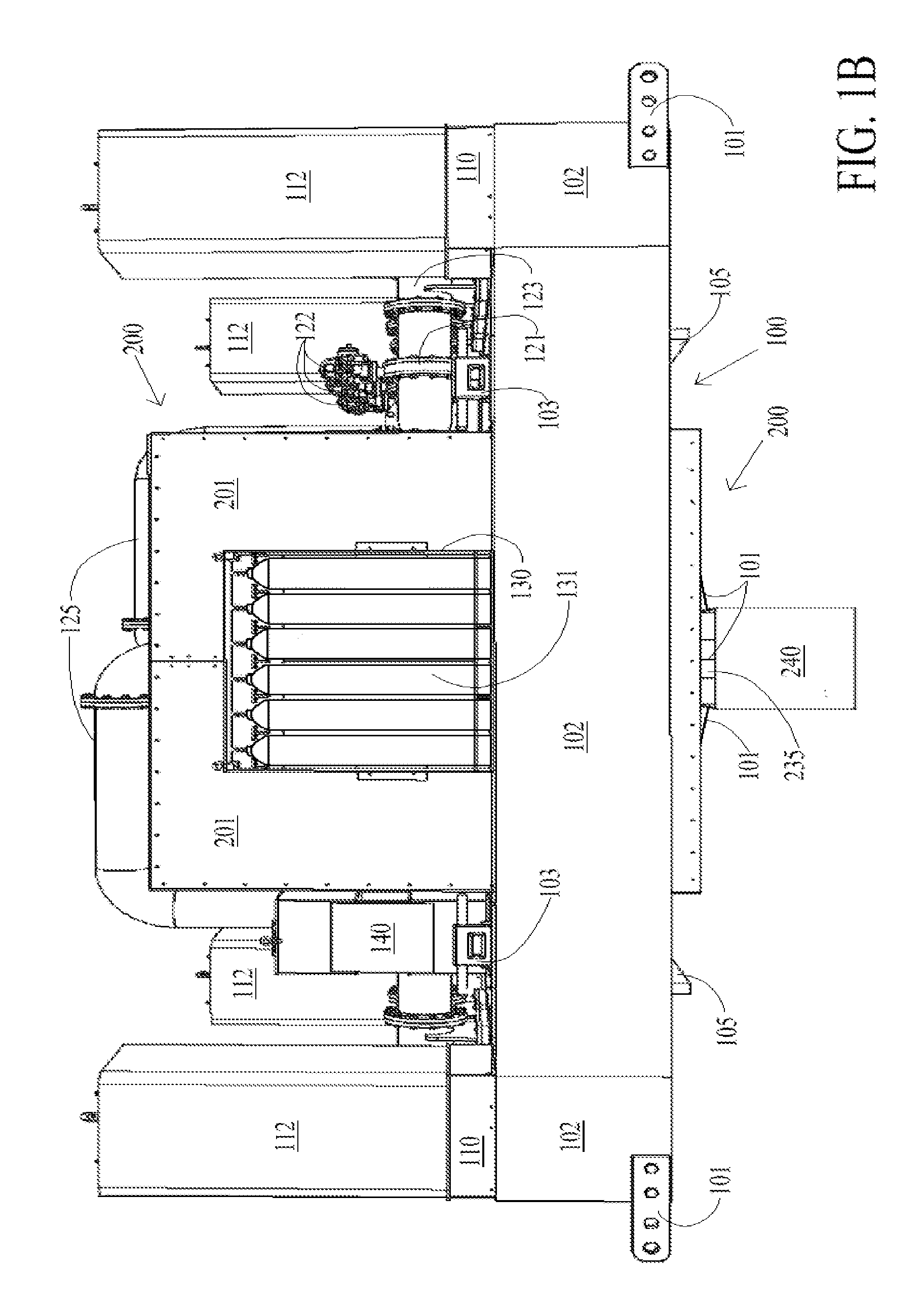Subsea collection and containment system for hydrocarbon emissions
a technology of hydrocarbon emission and containment system, which is applied in the field of subsea collection and containment system for hydrocarbon emissions, can solve the problems of unintended and exponential problems across economic, environmental and societal realms, limited current resources and technologies, and limited availability of extensive required support infrastructur
- Summary
- Abstract
- Description
- Claims
- Application Information
AI Technical Summary
Benefits of technology
Problems solved by technology
Method used
Image
Examples
first embodiment
[0114]FIG. 3A is side isometric view of an SSFCE segment 300 including panels 302, support straps 308 and strap termination points 312 for connecting adjacent segments 300. As an example, panels 302 might comprise 500 foot by 100 inch pieces of high-performance reinforced geomembrane such as Seaman XR5 8130 EIA (Ethylene Interpolymer Alloy) Polyester.
[0115]Furthermore the panel material used in the SSFCE segments might also include additional layers or laminations of the same or different material to the interior or the exterior for purposes such as strength and or thermal considerations.
[0116]Those skilled in the art will appreciate that this is just one example, and many variations are possible. For example, the length or diameter of segments 300 may be different. Segment 300 lengths of approximately 500 feet work very well due to fabrication, weight, counter-buoyancy requirements, logistics handling, etc. Longer or larger diameter segments 300 would require an increase in the num...
second embodiment
[0126]FIG. 3E is an isometric view of an SSFCE 300A segment section comprising SSFCE 300 as in FIG. 3D, further including drag coefficient reduction panels 302A and tail flap panels 302B. Construction of SSFCE 300A segments might include the attachment and welding of 302A panels to 302 panels during the construction of SSFCE segment 300A with the subsequent attachment of straps 308 and eyelets 310 and or grommets 310, etc. Panels 302A are the main constituents of the drag coefficient reduction system and panels 302B assist in reducing drag and turbidity, vortex turbulence, etc.
[0127]FIG. 3F is a top view of the segment 300A of FIG. 3E. FIG. 3G is a variation on the segment 300A of FIG. 3E where the drag coefficient reduction panels are connected using both opposing edges of the SSFCE segment (or in some cases opposing edges of two or more SSFCE segments).
[0128]FIG. 3H is a side view of the segment of FIG. 3E.
[0129]FIG. 3I illustrates an embodiment of a SSFCE segment 300, which inclu...
third embodiment
[0139]FIGS. 4E and 4F show a hook-and-loop connection. Loop flaps 303B form a V-shape having loop material disposed on all four sides. Hook flaps 305B form a W-shape having hook material on all six surfaces. Engaging flaps 303B and 305B thus forces water to follow an even more circuitous path in order to leak through this connection. Those skilled in the art will appreciate various other configurations of hook flaps 305 and loop flaps 303 that could form similar connections between SSFCE 502 segments 300.
[0140]FIG. 5 comprises FIGS. 5A and 5B which illustrate a deployment configuration of SSFCE 500. FIG. 5 shows how SSFCE 500 connects a hydrocarbon leak to floating platform 100 Rigid Enclosure 200. SSCFE 500 is a self-supporting flexible containment enclosure providing the conveyance method between subsea terminator assembly 600 or canopy terminator 300C and floating platform 100 at sea surface 502. There may be other variations and numbers of SSFCE subsea terminators connected to t...
PUM
 Login to View More
Login to View More Abstract
Description
Claims
Application Information
 Login to View More
Login to View More - R&D
- Intellectual Property
- Life Sciences
- Materials
- Tech Scout
- Unparalleled Data Quality
- Higher Quality Content
- 60% Fewer Hallucinations
Browse by: Latest US Patents, China's latest patents, Technical Efficacy Thesaurus, Application Domain, Technology Topic, Popular Technical Reports.
© 2025 PatSnap. All rights reserved.Legal|Privacy policy|Modern Slavery Act Transparency Statement|Sitemap|About US| Contact US: help@patsnap.com



